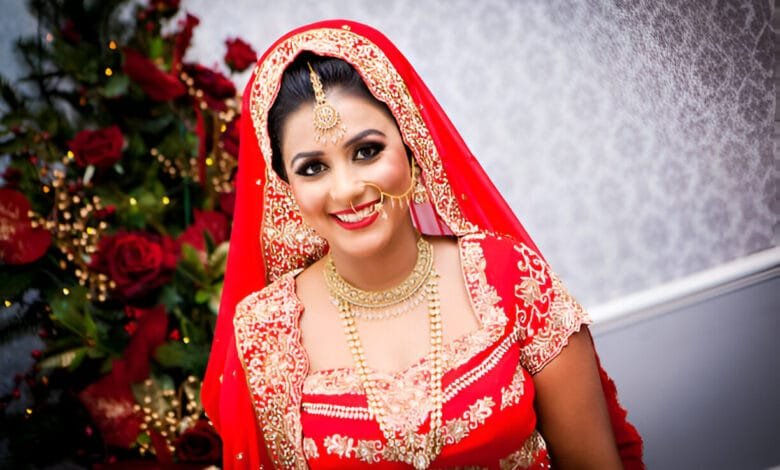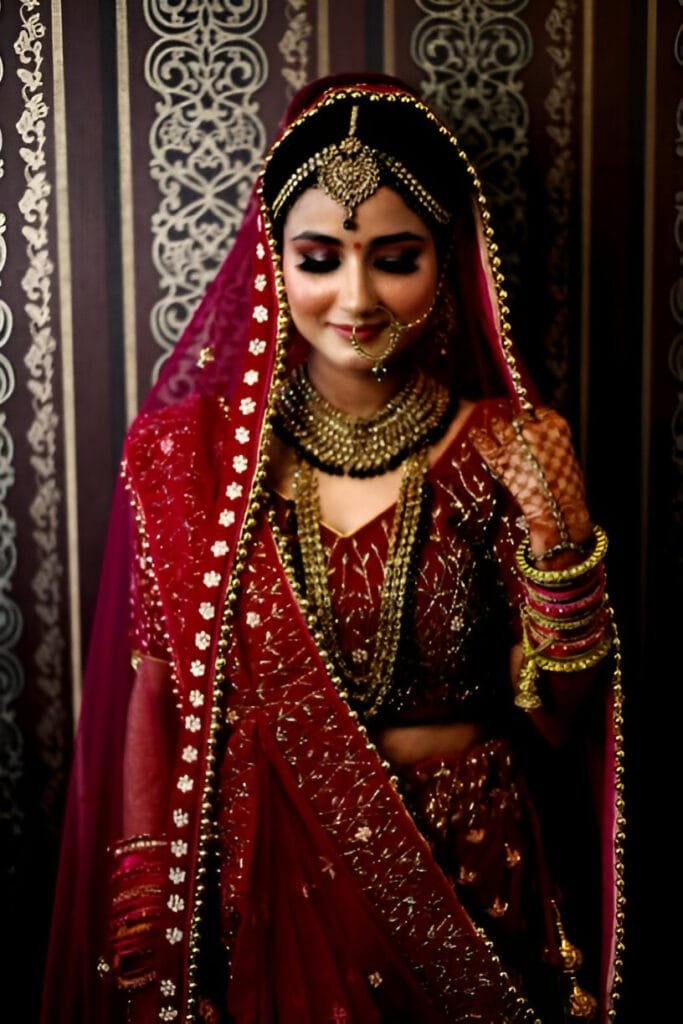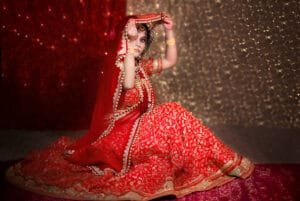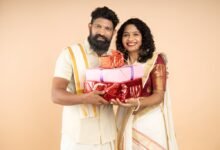Most Beautiful Pakistani Bridal Dresses for 2025

The post Pakistani Bridal Dresses: A Glimpse into the Elegance and Tradition appeared first on WEDDING IN PAKISTAN.
Pakistani bridal dresses are a beautiful mix of culture, tradition, and the modern trends. Bridalwear is the quintessential ingrained part of a Pakistani wedding, and it applies to a marriage in Lahore, Karachi, or Islamabad with equal merit, both styling-wise and morals-wise. The dress these brides wear is often richly embroidered with beadwork or lace and is made of colorful fabric, reflecting the vibrant traditions and customs that hold significance in the country’s wedding culture.

In this article, we will dive into the different types of Pakistani bridal dresses, their design aspects, cultural influences, and the evolution of the bridal dresses over the years. We’ll also go over fabric choices, color palettes, embroidery techniques, the bridal fashion of Pakistan and how it still enchants brides all over the world.
Pakistani Bridal Dresses – We’re Here to Help!
They are known for their elegance and details and for elaborated and decent styles of Pakistani bridal dresses. The dress is a representation of the bride’s character and the magnitude of the wedding event. The dress is usually the statement piece — an item carefully curated, designed and crafted to force anyone in its immediate vicinity, eyes outward, to acknowledge the bride on her special day. These dresses are adorned with intricate embroidery, beading, and often made with fine fabrics such as silk, velvet, chiffon, and georgette.
Pakistani bridal dresses are also marked with color choice significance.
Bridal color dresses are not picked up in Pakistan randomly. The most popular color for a Pakistani bride is still red, which signifies prosperity, happiness and love, although other colors such as gold, green, pink and ivory, are also common. Regional preferences, personal tastes, and family traditions often are reflected in the color selection.
Red: Red represents passion, love, and celebration. In Pakistan, red has been the traditional color worn by brides for generations, particularly on the actual wedding day or “Nikkah”. A heavy bridal red dress is always enhanced with extra charm and glamour with gold or silver work thread, sequins, embroidery, etc.
Golden And Maroon: Golden is generally used in brides dresses, either as the color base or used as an accessory. Maroon or deep red mixed up with the golden tones represent the lavishness and richness when it comes to getting married.
Pastels and Off-Whites: We are witnessing an increase in brides wanting pastel, ivory and softer hues. These tones are especially appealing during the “Valima” (reception) where the bride often wears a light tone to help with the image of peace and tranquility.
Green: This is an auspicious color associated with growth and fertility. In certain parts of Pakistan, it is considered common and beautiful for brides to wear a green dress with fine embroidery or embellishments.

Different Materials of Pakistani Bridal Dress
Fabrics are another important aspect that determines the extravagance and uniqueness of Pakistan bridal dresses. Different textures and moods are expressed through various fabrics for the dress. Each fabric is a story on its own, from the luxurious silks to the delicatess chiffons.
Silk: One of the most luxury fabrics in bridal dresses, silk has richness and sophistication. Mostly used for heavily embroidered dresses — particularly the main wedding ceremony.
Nice: Velvet Velvet trumpets richness, and it is an architectural fabric, so it appears during the winter wedding season. If you are looking for something slightly more traditional, but still obviously regal, it is a classic and a nobl a perfect cake for a bridal look and feel, with it’s satisyingly deep flavour and soft silky finish.
| Chiffon: This material is light and airy that is used for making delicate and flowing bridal dresses. It is often teamed with elaborate embroidery and embellishments for an ideal combination of classic and contemporary aesthetics.
Georgette: Another blushing brides favorite, georgette is a lightweight fabric with a nice smooth, soft texture and fall. Bridal dresses made from georgette are also preferred due to their comfort and flow.
Satin: Satin is smooth, lustrous and graceful, so this is also one of the favourite fabric of many brides in Pakistan. From evening to reception ceremonies, satin fabrics are specially selected.

Pakistani Bridal Dresses and their Exquisite Embroidery
Bridal dresses of Pakistan are famous for their embroidery which makes the dress look even more beautiful and the glamour of the dress is increased by the amount and quality of embroidery done on it. Embroidery stitches from different locations on the dress become a family-style affair, as the practices that are often passed down from generation to generation.
Zardozi: Zardozi is one of the most popular forms of00 embroidery. It is a traditional technique that uses gold and silver threads to embroider intricate patterns. Pakistani bridal dresses are embellished with zardozi work, which also lends them a royal appeal, and makes them ideal for lavish weddings.
Resham Work: Resham embroidery plays with silk threads to create intricate floral or geometric patterns over the dress. This technique is commonly used along with other embellishments to give color and texture to the bridal outfit.
Cutwork: Extra fabric is trimmed to create intricate patterns. It is a time-consuming process, resulting in gorgeous and elaborate designs, which are commonly used in bridal dresses for occasions.
Mirror Work: This is a type of embroidery where small pieces of mirror are sewn to the fabric to give it a sparkling effect. Mirror work is widely done in many areas of Pakistan, especially to make the bridal dress glamorous.
The Traditional Bridal Styles
Pakistani dresses for brides vary widely depending on the its style, cut, and make. How they dress varies by region, family custom and type of ceremony.
Lahana Choli: A timeless Pakistani wedding, the lehenga choli is a long skirt with the blouse, a fitted shirt that’s called within the region choli, and a dupatta (scarf). The lehenga usually comes heavily decorated with sometimese intricate designs, making it a statement piece of bridal wear. However, lehenga cholis are the most preferred option.

Sharara: An alternate traditional bridal slay style that is much-loved in Pakistan, especially in areas like Lahore, securing a comfortable place next to a lehenga It includes a long shirt (kameez) with wide-legged pants (shararas) that are usually embellished and embroidered heavily. To complete the look, sharara outfits are usually paired with a long dupatta.
Anarkali: The Anarkali silhouette is known for its long, free flowing silhouette. This dress style features a long frock-like top, normally with a flared bottom, paired with a slim skirt or churidar. Brides looking for a royal and elegant look often opt for Anarkali dresses.
Saree: Sarees are not as popular as lehengas and shararas, yet some Pakistani brides opt for a saree, especially for their wedding day. They are usually stitched in silk with lavish embroidery and beadwork.
Frock and Skirt: A contemporary take on classic bridal wear is the frock and skirt set which has only recently made its way to the Pakistani bridal fashion list. With an A-line or flared skirt, often embroidered or embellished, gives the traditional look a contemporary twist, with the frock-style top paired with it.

Pakistani bridal dresses — modern trends
Traditional bridal wear is a staple but has been been chosen more recently by the modern Pakistani bride, who instead is opting for something slightly more contemporary. These contemporary inlines often merge Western fashion’s idioms with traditional know-how to create a hybrid silhouette reflecting the shifting sensibilities and global influences.
Fusion Style: One of the major trends in today’s Pakistani bridal fashion is the fusion of Eastern and Western styles. Many brides are opting for bridal dresses that incorporate traditional embroidery and rich materials with Western silhouettes, like off-shoulder gowns, A-line dresses or even tea-length skirts.
Minimalism: More and more brides are opting for subtle colors, light materials, and less heavy embroidery. This option is favored by those looking for a more subdued, modern appearance.
Pre-Draped Sarees and Lehenga Gowns: Fusing the traditional attire of sarees or lehengas with modern designs, pre-draped sarees and lehenga gowns are becoming an increasingly popular choice among brides who love the look of sophisticated and traditional wear, but prefer convenience and comfort.
Best Mehndi Dress for Men to Rock the Ceremony
The Evolution of Pakistani Bridal Dresses Through Time
Pakistan bridal dresses’ evolution is a reflection of the changing societal norms, influences of global fashion trends and advancement in textile technology. Earlier bridal dresses used to be more basic and were more concentrated on traditional embroidery, however couples of them now use modernized elements like adding European cuts of sharara trends, contemporary fabric ranges, etc.
Traditional, with a touch of Modernity: Pakistani bridal dresses went from strictly traditional to having modern elements. Brides now have access to global bridal collections, and the styles we see at weddings in our own backyards can be heavily influenced by international designers.

Fusion Styles: Eastern and Western bridal wear has become fusionized in Pakistani bridal wear. Most Pakistani brides nowadays opt for outfits that combine the traditional lehenga or sharara silhouette with Western design features — think dresses, modern cuts, accessories.
Technology and Craftsmanship − The advanced embroidery machines, digital-print, and 3D embellishments have revolutionised the Pakistani bridal dresses. Even though traditional handcrafting remains immensely valued, technology has empowered designers to develop more complex and detailed designs.
Conclusion
Pakistani bridal dresses are not just dresses, they are a reflection of tradition, culture and uniqueness. These dresses combine intricate embroidery, elegant fabrics, and symbolic color schemes to create a timeless aesthetic that keeps evolving. Be it the traditional & cultural red lehenga choli or a modern fusion Pakistani bridal dresses provides you with an ideal combination of traditional & contemporary.
As a result, Pakistani bridal attire is one of the most sparkling ornaments of the whole wedding joy. While bridal trends will keep changing, the crux of Pakistani bridal dresses stays connected with traditions as well as aberrations and inventiveness.



